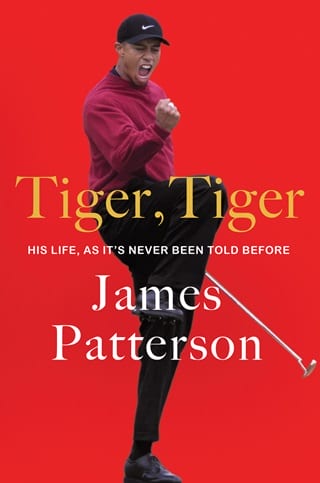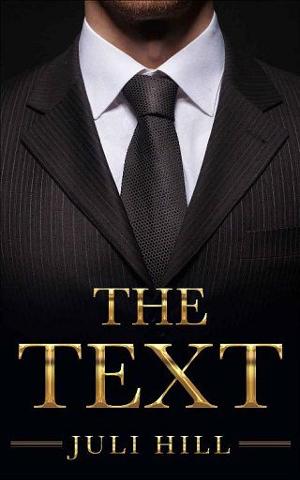Chapter 70
Arnold Palmer Invitational
Bay Hill Club & Lodge
Orlando, Florida
March 26–29, 2009
Hey, golf world, Tiger Woods is back,” the Los Angeles Times declares.
Nine and a half months after Tiger won his last tournament, he not only wins the Arnold Palmer Invitational—for the sixth time—but also overcomes a five-stroke deficit to do so. He sinks a sixteen-foot birdie putt to win by a single stroke, reminiscent of his victory here last year.
At the course, outside Orlando, Florida, local fans root for their hometown hero.
“Reel him in, Tiger!”
“Catch up, buddy!”
“We have faith in you!”
“This win definitely validates all the things I’ve been trying to do,” says Tiger.
It’s not all smooth sailing. At the Masters, he ties for sixth, then gives a ninety-second press conference, stating, “I hit the ball terrible out there.” He’s been having trouble controlling his temper, swearing and throwing his clubs in anger.
On Sunday, June 22, instead of defending his history-making 2008 U.S. Open title, Tiger finishes sixth there, too.
On July 16, he misses the cut—by a single stroke—at the British Open at Turnberry, in Ayrshire, Scotland. “This is surprising,” says five-time Open champion Tom Watson, who finishes second. Despite high-profile losses, “it seems like [Tiger’s] been playing awfully well this year.”
He’s had a fair number of wins, following the Arnold Palmer Invitational on March 29 with wins at the Memorial Tournament on June 7 and the AT&T National on July 5.
But when he hit bad shots at Turnberry, he angrily reacted with a move ESPN columnist Rick Reilly calls a “Turn and Bury,” raising his club and slamming it into the ground.
“In every other case,” Reilly writes, “I think Tiger Woods has been an A-plus role model. Never shows up in the back of a squad car with a black eye. Never gets busted in a sleazy motel with three ‘freelance models.’ Never gets so much as a parking ticket. But this punk act on the golf course has got to stop.”
Tantrums are more characteristic of kids. Sam, who just turned two on June 18, “doesn’t like for me to help her hold a golf club,” Tiger says. “She’ll figure it out herself.” It’s wild to recall that Tiger was roughly the same age when he putted with Bob Hope on The Mike Douglas Show, a reporter points out.
Tiger concurs. “It’s hard to believe that I was swinging a club at that age.”
Four-month-old Charlie is too young to take up the game just yet, but his dad is looking forward to it. “I love to teach,” he says, hoping he can soon “start teaching Charlie a few things, that’s fun. I live to be able to do that.”
Tiger strings together another two wins in August—in a single week notching both the Buick Open on August 2 and the WGC-Bridgestone Invitational on August 9.
Then on August 16, at the PGA Championship at Hazeltine National Golf Club, the unthinkable happens. Tiger’s never lost when leading on a Sunday—until an unlikely thirty-seven-year-old challenger named Y. E. Yang, who’s barely cracked the top five hundred in the Official World Golf Ranking (“Who the heck is Y. E. Yang?”) prevails over him.
Tiger’s soon back on top with his fifth BMW Championship on September 12, dominating the field with a 19-under 265 at Cog Hill, in Illinois. It’s his sixth win of the season and his seventy-first PGA tournament win, bringing him to within two of Jack Nicklaus’s seventy-three career wins.
“It’s one of my best years, there’s no doubt about that” is Tiger’s perspective. “I haven’t won as many times as I did in 2000 and didn’t win any majors this year, but certainly I’ve never had a year where I’ve been this consistent either, this many high finishes and the number of events I’ve played.”
He’s definitely been well paid, ending the season with $10,508,163 in prize money and once again topping the PGA Tour money list. His take is nearly double the $5,332,755 in earnings that puts Phil Mickelson at third.
When the money list is published, in mid-November, Tiger is in Melbourne, Australia, playing in the Australian Masters at Kingston Heath Golf Club, located in the Melbourne Sandbelt. “All the guys have raved about this golf course and I understand why,” Tiger comments. “I enjoy all the sandbelt courses really, because it brings back shotmaking and it’s something that we don’t see enough of in the States.”
IMG runs the tournament, cosanctioned by the PGA Tour of Australasia and the European Tour, and funds half of Tiger’s $3 million appearance fee. The Australian government picks up the other half. Tiger’s multimillion-dollar appearance fee is controversial—it’s double the tournament’s total prize money—but when Kingston Heath sells one hundred thousand tickets, the event is declared a success, generating an estimated $20 million return to the local economy.
“He over-delivered,” says Australian Ian Baker-Finch, the 1991 British Open champion turned analyst for CBS Golf.
An unprecedented crowd of twenty-five thousand turns out for the final round. Tiger and two Australian golfers are in a three-way tie for the lead when they start the final round. On the 13th hole, a cameraman presses uncomfortably close, twice snapping photos just as Tiger executes his approach shot.
When the ball bounces off the green and lands in the rough, Tiger turns and angrily tears into the photographer: “That got me right on my downswing.” He spikes his Nike club into the ground with such force that it boomerangs into the gallery, packed ten deep, narrowly missing the heads of several spectators.
Tiger retrieves his club but bogeys the hole.
It’s a momentary lapse. He recovers his composure to win the tournament by two shots.
“I got a W,” Tiger says. “That was the goal this week.”
Winning the Gold Jacket—the Australian Masters’ equivalent of Augusta National’s Green Jacket—also expands his international achievements. “Now I have won on every continent, except for Antarctica,” he notes.
From Australia, Tiger flies to Asia, stopping in Dubai, where he’s designing a new golf course. From there, it’s a quick stop home in Orlando to scoop up his wife and kids, bringing them with him to Northern California.
This time it’s not for golf: it’s for the Big Game, the annual football match-up between the Stanford Cardinal team and the California Golden Bears of the University of California at Berkeley.
The 112th Big Game at Stanford Stadium “is going to be pretty special,” says Conrad Ray, who once hosted Tiger as a Cardinal recruit and now coaches the Stanford men’s golf team. Tiger will be inducted into the Stanford Hall of Fame, act as honorary football captain for the game, and do the pregame coin toss.
On Saturday, November 21, Tiger carries Sam with him as he gives an on-field pep talk to the Cardinal team. He calls heads in the coin toss and wins it for his former school.
“It’s a great honor to be included in the 2009 Stanford Athletics Hall of Fame class,” Tiger says. “The university helped me grow as a person and an athlete, and I will always be grateful.”
“Tiger belongs in [the Stanford Hall of Fame], that’s for sure,” Ray says. “Everyone here is excited.”
Not the Cal fans. They interrupt Tiger’s halftime speech with a chorus of boos. Tiger pauses, then delivers his closer. “The second half is ours.”
The prediction wins cheers, but not results. Cal pulls off an upset, 34–28.
“I don’t care what school you went to. You can’t boo Tiger Woods,” a coanchor marvels on ABC’s After the Game. “How do you boo Tiger Woods?”
That’s a question only Tiger can answer.
 Fullepub
Fullepub 



